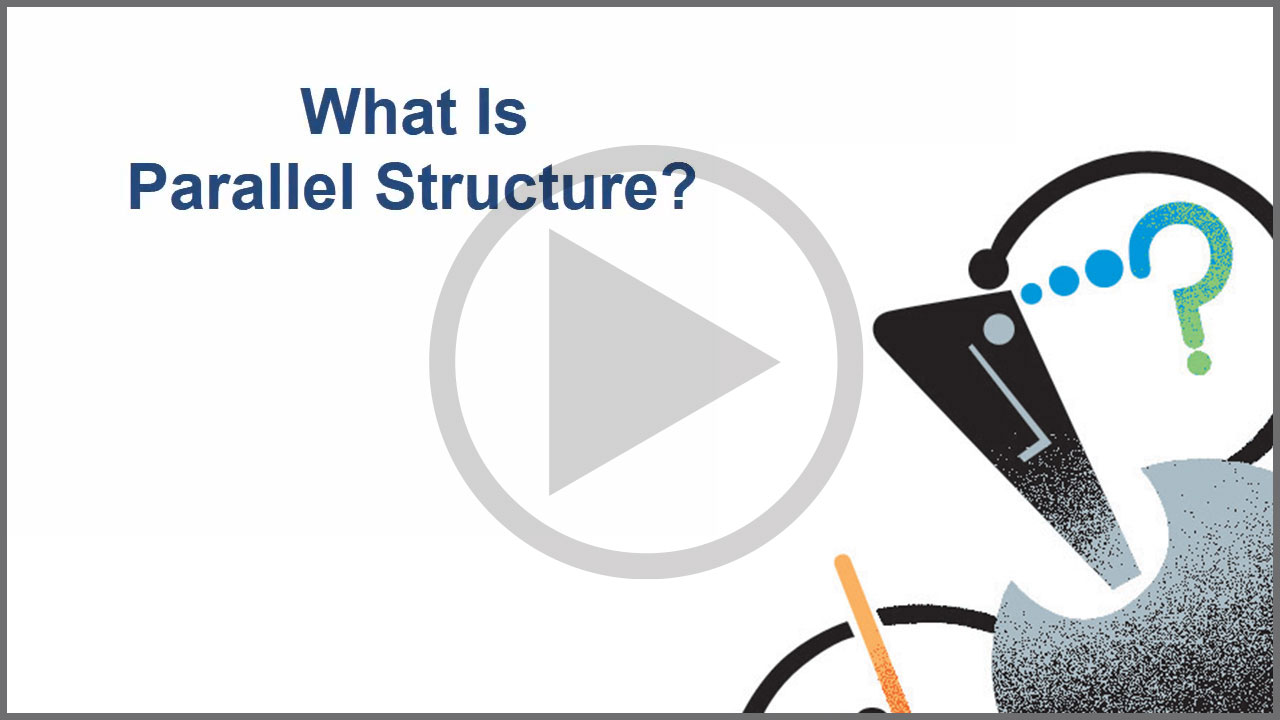One great way to add style and clarity to your writing is to use parallel structure when conveying similar ideas. Parallel structure emphasizes the relationship between ideas by using words, phrases, or clauses of the same type.
Consider the strength of Winston Churchill’s statement “I have nothing to offer but blood, toil, tears, and sweat.” That list of one-syllable nouns delivers quite an impact.
Parallel phrases can have a similar impact, as do the prepositional phrases in Lincoln's famous line from the Gettysburg Address: “government of the people, by the people, for the people . . .”
The clauses in Benjamin Franklin’s clever statement “We must indeed all hang together or we will most assuredly all hang separately” form another excellent example of parallelism.
Parallel structure can also emphasize a contrast, as in the statement "I’d rather be a roaring kitten than a cowering lion." In this case, the parallel phrasing emphasizes the two creatures’ differences.
Correlative conjunctions can help create parallelism, with each portion of the statement written in the same form:
The board of directors not only sanctioned the manager’s expenditure but also applauded her foresight.
Here, both phrases begin with a past-tense verb and end with a direct object.
So remember, use parallelism to connect related ideas and create a pleasant rhythm, making your writing both clear and enjoyable.
Avoiding Unparallel Construction
Unparallel construction occurs when different grammatical forms get jumbled, creating a sentence error. Beware of grammatical shifts, especially in sentences with a series of items and in bulleted and numbered lists.
Make sure all elements in a series are the same part of speech (all nouns, all adjectives, all prepositional phrases, and so on).
Unparallel: All products must be tested, receive approval, and labeling added before shipment. (This sentence shifts verb forms from tested to receive approval to labeling added.)
Parallel: All products must be tested, approved, and labeled before shipment. (All three verbs end with ed—they are consistent or parallel.)
In the parallel example, notice how each item in the series correctly “reads in” to what came before: All products must be tested; All products must be approved; All products must be labeled. In each case, the past tense verb works with the helping verbs must be. Sentence parts that fulfill the same function should have the same form. That’s parallel structure.
Make sure all list items begin consistently and "read in" to what came before.
Unparallel:
To that end, I have done the following:
- Met with the executive committee to review the FDA report.
- Direct the production management team to review quality-control procedures.
- Appointing a Quality Task Force to study the production process and make recommendations.
- I briefed sales and publication-relations staff and directed them to contact customers.
Parallel:
To that end, I have done the following:
- Met with the executive committee to review the FDA report.
- Directed the production management team to review quality-control procedures.
- Appointed a Quality Task Force to study the production process and make recommendations.
- Briefed sales and publication-relations staff and directed them to contact customers.
Watch this brief video from Write for Business for more information about creating parallel structure.
 |